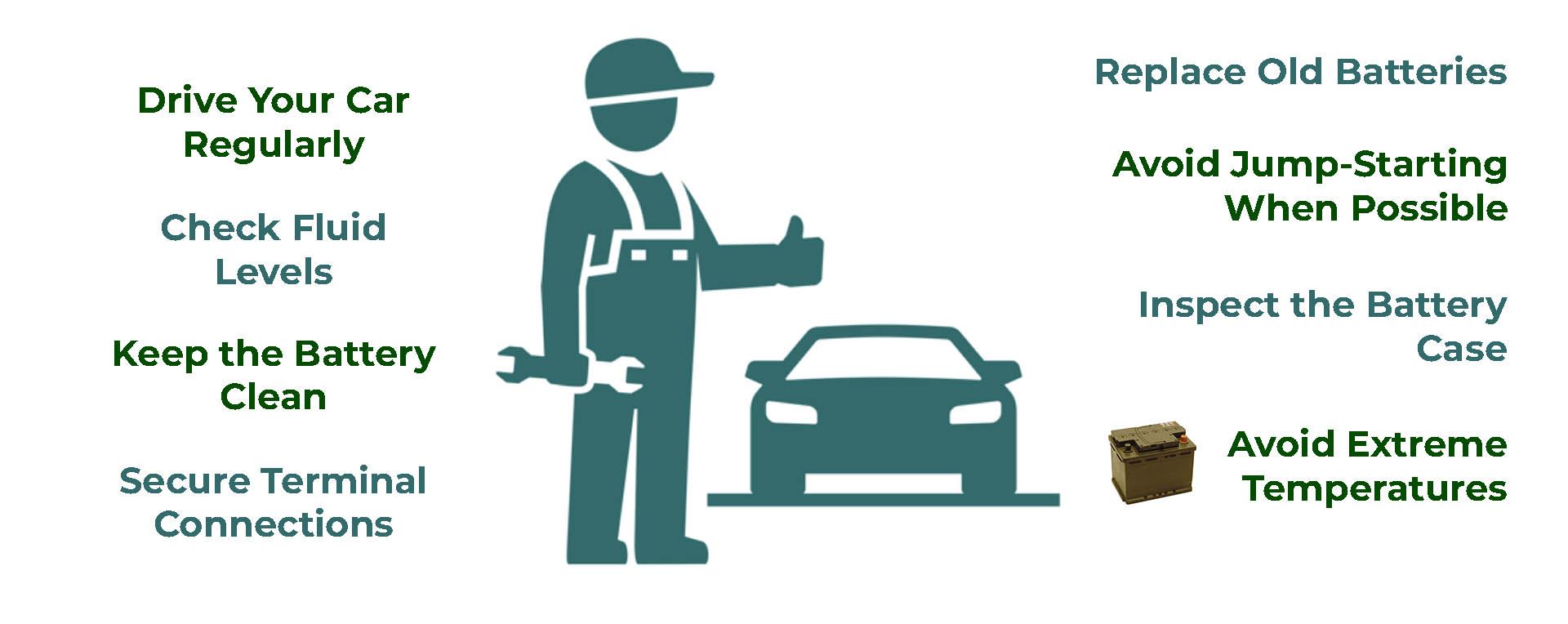Introduction:
When it comes to the intricacies of an automobile, one of the fundamental components that power its functionality is the car battery. Among the questions that often arise is, “How many volts is a car battery?” In this blog post, we’ll delve into the world of automotive power, exploring the voltage of a car battery and its significance in keeping your vehicle up and running.
Car Battery Voltage:
Car batteries are typically 12-volt batteries. This means they provide an electrical potential difference of 12 volts between their positive and negative terminals. This voltage is essential for numerous critical functions in your vehicle, from starting the engine to powering various electronics and accessories. Below is more info on how many volts for a car battery.
It’s important to note that the voltage of a car battery can also provide insights into its state of charge. A fully charged 12-volt battery typically reads around 12.6 to 12.7 volts. As the battery discharges through usage, its voltage drops. For example, a reading of 12.2 volts might indicate a partially discharged battery, while a reading of 11.8 volts might suggest a deeply discharged battery.
The voltage of a car battery directly influences its performance. While turning the ignition key, the starter motor requires a significant surge of electrical power to crank the engine. The 12-volt battery provides this initial burst of energy, getting the engine running. Moreover, the battery’s voltage is essential for the proper functioning of electronic systems, such as lights, infotainment systems, air conditioning, and more.
In colder climates, the battery’s ability to provide power is also influenced by its voltage. Cold temperatures can lead to a reduction in battery performance. This is where Cold Cranking Amps (CCA) come into play. CCA measures the battery’s ability to start the engine in cold conditions. While battery voltage is crucial, a higher CCA rating also signifies better cold-weather performance.
The short answer to “How Many Volts is a Car Battery” is 12 volts.

Car Battery Maintenance:
Maintaining your car battery properly can extend its lifespan and ensure reliable performance. After learning about “How Many Volts is a Car Battery” you may need to learn about battery maintenance. Here are some steps you can take to maintain your car battery:
1. Keep the Battery Clean:
Regularly check the battery terminals for corrosion. Corrosion can hinder the flow of electrical current. If you notice corrosion, disconnect the battery terminals and clean them using a mixture of baking soda and water. Scrub the terminals gently with a wire brush.
2. Secure Terminal Connections:
Ensure that the battery and both terminals are securely connected. Loose connections can result in poor electrical contact and can also contribute to corrosion.
3. Check Fluid Levels (for Flooded Batteries):
If your car battery is of the traditional flooded type (not maintenance-free), check the fluid levels regularly. Add distilled water if necessary to keep the plates submerged. Be cautious not to overfill.
4. Drive Your Car Regularly:
Regular driving helps keep the battery charged. Short trips and infrequent use can lead to a drained battery, as the alternator might not have sufficient time to recharge it fully.
5. Avoid Draining the Battery:
Minimize using electrical accessories (lights, radio, air conditioning, etc.) when the engine is off. Leaving these accessories on can drain the battery quickly.
6. Use a Battery Maintainer/Charger:
If you won’t be using your car for an extended period, consider using a battery maintainer or trickle charger. These devices provide a low, steady charge to the battery, preventing it from becoming overly discharged.
7. Avoid Extreme Temperatures:
Extreme heat or cold can impact a battery’s performance and lifespan. If possible, park your car in a garage or shaded area during extreme weather conditions.
8. Inspect the Battery Case:
Check the battery case for any cracks or damage. A damaged case can lead to leakage, which is hazardous and can also damage the battery’s internal components.
9. Replace Old Batteries:
Car batteries have a limited lifespa. It is typically around 3 to 5 years. If your battery is approaching this age, consider replacing it proactively to avoid unexpected failures.
10. Reduce Parasitic Drain:
Make sure that no electrical components are drawing power when the car is off. Some devices, like aftermarket stereos or alarms, might continue to draw power even when the car is parked.
11. Avoid Jump-Starting When Possible:
While jump-starting a dead battery is sometimes necessary, it’s better to avoid doing so frequently. If your battery frequently goes dead, it’s a sign that there might be an underlying issue.
Remember that maintenance practices can vary based on the type of battery your car uses (traditional flooded, AGM, gel, etc.), so consult your vehicle’s manual and follow manufacturer recommendations. If you’re unsure about any aspect of battery maintenance, consider seeking advice from a professional mechanic.

Ampere of Car Battery:
If you are looking for “How Many Volts is a Car Battery” then you may also need to learn ampere of car battery. Car batteries are typically rated in ampere-hours (Ah), which indicates the amount of charge the battery can deliver over a specific period of time. Ampere (A), on the other hand, is a unit of electrical current.
Car batteries typically have a capacity that ranges from around 30 Ah to 100 Ah or more. It means that, a fully charged battery can theoretically deliver a certain amount of current for one hour. However, the actual current (amperes) a car battery can deliver depends on the various factors including the state of charge, the load placed on it, and its internal resistance.
For example, a common car battery might have a capacity of 60 Ah. This doesn’t mean it can deliver 60 amperes continuously for an hour, but rather it could provide 6 amperes for 10 hours or 30 amperes for 2 hours, and so on, before it’s considered fully discharged.
In summary, a car battery’s capacity is rated in ampere-hours (Ah), not in amperes (A). The current (amperes) a car battery can deliver depends on its capacity, state of charge, and other factors.

Role of Voltage in Car Batteries:
Voltage plays a crucial role in car batteries as it determines the electrical potential difference between the positive (red) and negative (black) terminals of the battery. This potential difference drives the flow of electric current within the various electrical systems of the vehicle. Here’s how voltage is significant in car batteries:
1. Starting the Engine:
The primary function of a car battery is to provide the initial burst-power needed to start the engine. While turning the ignition key, the starter motor requires a high amount of current to crank the engine. The voltage level of the battery determines how effectively this initial current can be provided.
2. Electrical Systems:
Vehicles have various electrical systems that rely on the battery for power when the engine is not running or the alternator is not generating electricity. These systems include lights, radio, air conditioning, power windows, and more. The voltage level of the battery ensures that these systems receive the necessary power to operate.
3. Charging System:
In time the engine is running, the alternator takes over the task of providing electrical power to the vehicle’s systems while also charging the battery. The alternator typically produces a slightly higher voltage than the battery, which allows it to both power the vehicle’s systems and recharge the battery. However, the battery’s voltage remains important for providing stability to the overall electrical system.
4. Stability of Electronics:
Many modern vehicles are equipped with complex electronic systems and sensors that require a consistent and stable voltage supply. Fluctuations in voltage can lead to erratic behavior of these systems and potentially cause malfunctions or damage.
5. Battery State of Charge:
The voltage level of a car battery can also indicate its state of charge. A fully charged battery typically has a higher voltage reading, while a discharged or partially discharged battery has a lower voltage. Monitoring the voltage can give you an idea of the battery’s health and whether it needs charging or replacement.
It’s important to note that car batteries usually have a nominal voltage of around 12 volts for vehicles with traditional internal combustion engines. However, the actual voltage range can vary a little bit depending on the battery’s state of charge, temperature, and other factors. Additionally, hybrid and electric vehicles might have different battery configurations with higher voltages to accommodate their electric power-trains.

FAQ:
How Many Volts is a Car Battery?
A typical car battery, which is a lead-acid battery commonly used in vehicles, typically has a voltage of around 12 volts. This 12-volt battery is composed of six cells, each providing approximately 2.1 volts, for a total of around 12.6 volts when fully charged. Sometimes the actual voltage can vary depending on a few factors, such as the state of charge, temperature, and the specific type of battery.
How to charge a car battery?
There are many ways to charge a car battery; even you can charge without a charger. Few methods are-
1. Jump-Starting from Another Vehicle.
2. Using a Battery Charger from a Store.
3. Using a Trickle Charger.
4. Solar Chargers.
5. Wind or Hydro Generator.
See more How to Charge a Car Battery Without a Charger?How much does a car battery cost?
The cost of a car battery typically ranges from $50 to $200, depending on some factors such as brand, size, and type of battery.
How long do electric car batteries last?
Electric car batteries typically last 8 to 15 years, depending on factors like usage, battery chemistry, and environmental conditions ranging between 100,000 and 200,000 miles.Who buys used car batteries near me?
To find local buyers for used car batteries near you, consider checking with auto parts stores, recycling centers, or online platforms like Craigslist or Facebook Marketplace.Does car battery charge at idle?
Yes, a car battery can charge to some extent while the engine is idling, but it charges more effectively when the vehicle is being driven at higher RPMs.
How to put car in neutral with dead battery?
To put a car in neutral with a dead battery, locate the manual shift release near the gear lever. Insert a small tool or key into the slot and gently press/release it to disengage the shifter lock, allowing you to shift to neutral.
How long to leave battery disconnected to reset car computer?
Typically, disconnecting a car’s battery for about 15-30 minutes can reset the computer’s memory and settings. However, it may vary depending on the vehicle and the issue you’re trying to address.
How to recondition a car battery?
To recondition a car battery, discharge it completely, then slowly recharge it. Add distilled water if needed. Perform equalization charge if possible. If capacity doesn’t improve, consider replacement. Always follow safety guidelines.
How long do hybrid car batteries last?
Hybrid car batteries typically last around 8 to 15 years, depending on usage, maintenance, and climate conditions.
Conclusion:
In the world of automobiles, where technology continuously evolves, the 12-volt car battery remains a cornerstone of reliable vehicle operation. Its voltage powers critical functions, from ignition to electronics, making it an indispensable component. Understanding the significance of car battery voltage empowers you to take better care of your vehicle, ensuring it runs smoothly and efficiently, mile after mile.





